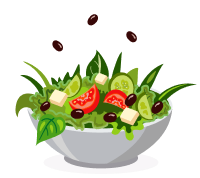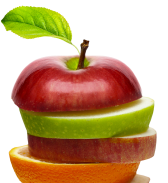Table Of Contents
Boost Your Metabolism with a 1600 Calorie-a-Day Meal Plan
Hello, health-conscious foodies and fitness enthusiasts! Are you on a quest for a nutritional plan that keeps you energized, helps maintain your shape, and also tickles your taste buds? Maybe you’ve heard about the 1600 Calorie Meal Plan but are unsure about its benefits or how to implement it. You’ve landed in the right spot!
Is 1600 calories enough? We’ve got every aspect covered, from delving into the science behind this calorie-specific plan to offering scrumptious meal ideas that fit the bill. So, get comfy and prepare to dive into the flavorful universe of the 1600-calorie meal plan. Your journey towards a nourished body and fulfilled palate starts here!
Unlock the Mysteries of the 1600 Calorie Diet: A Thorough Examination
First off, the number of calories we need daily varies based on factors like age, sex, weight, height, and physical activity level. On average, adult women need about 2000 calories per day to hold their weight, and adult men need – 2500. But if you’re trying to lose weight, you’ll need to consume fewer calories than your body uses.
That’s where a 1600-calorie diet comes in. By reducing your daily intake to 1600 calories, you create a calorie deficiency required for weight loss.
However, there are some common misconceptions about calorie intake:

Misconception 1: All calories are created equal.
While it’s true that all calories provide the same amount of energy, different foods can have vastly different impacts on your hunger, hormones, and metabolic rate. For example, protein can increase your metabolic rate and reduce appetite compared to carbs or fat.
Misconception 2: Cutting calories will lead to constant hunger.
Not necessarily. You can keep hunger at bay by picking foods high in fiber and protein. These nutrients slow down digestion and help you feel fuller for longer.
Misconception 3: Low-calorie diets are always healthy.
Only sometimes. A diet could be low in calories but also low in essential nutrients. That’s why it’s crucial to focus on how many calories you’re eating and where those calories are coming from.
Also, read – Healthy Meal Plan for the Week
Is 1600 Calories Enough to Lose Weight? The Energy Equation Unraveled
We’ve all heard the saying, “You are what you eat.” While it’s a bit of an oversimplification, there’s a kernel of truth in it. What we consume does play a decisive role in our weight management.
- Our bodies need energy to function, which comes from our food. The unit of measurement for this energy is called a calorie. When we consume more calories than our bodies can burn off through daily activities and exercise, excess is stored as fat, leading to weight gain.
Picture this: Imagine your body as a car and the food you eat as the fuel. If you fill up the tank but only go for a short drive, the leftover gas stays in the tank. Similarly, if you eat more than your body needs daily, it stores the extra fat.
To lose weight, the equation must be flipped. To lose weight, the equation needs to be flipped. You need to burn more calories than you consume, creating what is known as a caloric deficit. This forces your body to dip into those fat reserves for the extra energy it needs, leading to weight loss.
How to Eat 1600 Calories a Day without Feeling Deprived
Firstly, let’s talk about macronutrients.
A standard macronutrient ratio for a balanced diet is 40% carbs, 30% fats, and <20-30% protein.
1. Proteins are required for repairing body tissues and maintaining muscle mass. They also help to keep you feeling satiated.
Sources: chicken breast, turkey, lean red meat, fish, tofu, and legumes.
2. Carbohydrates are your body’s primary source of energy. They also have fiber, which aids digestion and keeps you feeling full.
Sources: whole grains, fruits, and vegetables – digested slowly and provide a steady stream of energy.
3. Fats are also vital for energy and support cell function. They help the body absorb nutrients and produce important hormones, too.
Sources: healthy fats from avocados, nuts, seeds, and olive oil.
Diversity in meals is key.
Eating a variety of foods provides a broad spectrum of nutrients. Try to include different-colored fruits and vegetables, vary your protein sources, and switch between various types of whole grains.
Meal planning can be a game-changer.
It helps ensure you eat balanced meals, controls portion sizes, saves money, and prevents last-minute unhealthy food choices.
Portion control
A helpful technique for portion control is to use smaller plates and bowls. Also, filling half of your dish with vegetables, a quarter with protein, and a quarter with complex carbs can help ensure balanced meals.
Mindful eating techniques
Mindful eating techniques involve paying attention to hunger and fullness signals, eating gradually, and savoring each bite. These techniques can help prevent overeating and enhance meal enjoyment.
Is 1600 Calories a Day Healthy? Unmasking the Truth Behind Dietary Habits
NOTE: not all calories are created equal. Eating 1600 calories of nutrient-dense whole foods may give far greater health advantages than the same number of calories from processed, sugary foods. For instance, fiber and protein-rich foods can make you feel fuller and provide essential nutrients your body needs to function correctly.
If you’re looking for substitutions for unhealthy food options, consider swapping out:
- Refined cereals (like white bread) for whole grains (like whole-wheat bread).
- Sugary drinks with water or unsweetened tea.
- Try spices and herbs to flavor your meals instead of salt.
- Opt for lean proteins (chicken or fish) over fattier cuts of meat.
Revitalize Your Health with Our 21 Day 1600 Calorie Meal Plan: Nourish Your Body, Nourish Your Life
Week 1. Foundation & Variety
Day 1-7: Balanced Beginnings
- Breakfast: Oatmeal made with ½ cup oats, 1 cup dairy or soy milk, topped with a handful of berries and a tablespoon of flaxseeds. (~300 calories)
- Mid-Morning Snack: Carrot sticks with 2 tablespoons hummus. (~100 calories)
- Lunch: Quinoa salad with mixed vegetables (bell peppers, cucumber, tomatoes), 3 oz grilled chicken, dressed with lemon juice and a teaspoon of olive oil. (~400 calories)
- Snack: Greek yogurt (plain, non-fat) with a sprinkle of cinnamon and a small apple. (~200 calories)
- Dinner: Grilled salmon (4 oz), side of steamed broccoli, and ½ cup brown rice. (~500 calories)
Week 2. Probing Flavors
Day 8-14: Diverse Dishes
- Breakfast: Smoothie with 1 cup spinach, ½ banana, ½ cup mixed berries, 1 tablespoon chia seeds, and 1 cup dairy or soy milk. (~300 calories)
- Mid-Morning Snack: Cottage cheese (½ cup) with pineapple chunks. (~100 calories)
- Lunch: Turkey wraps with whole wheat tortilla, lettuce, tomato, cucumber, and ¼ avocado. Use 3 oz turkey breast. (~400 calories)
- Snack: A handful of almonds, and a small orange. (~200 calories)
- Dinner: Stir-fry with 4 oz tofu, mixed vegetables (bell pepper, snap peas, carrots), and a side of quinoa (½ cup cooked). (~500 calories)
Week 3. Viscosity & Creativity
Day 15-21: Creative Combos
- Breakfast: Two scrambled eggs with spinach and mushrooms, served with a slice of whole-grain toast. (~300 calories)
- Mid-Morning Snack: A small pear with a slice of cheese. (~100 calories)
- Lunch: Mixed bean salad (kidney beans, black beans, corn, diced tomatoes) with grilled shrimp (3 oz) and a small whole wheat pita. (~400 calories)
- Snack: Sliced bell peppers with ¼ cup guacamole. (~200 calories)
- Dinner: Baked chicken breast (4 oz), roasted sweet potatoes (½ cup), and green beans. (~500 calories)
1600 Calorie High Protein Meal Plan – Power Up Your Day!
Breakfast
- Egg White Omelette: Cook 4 egg whites with spinach, tomatoes, and mushrooms. Serve with 1 slice of whole-grain toast and ¼ avocado. (~300 calories)
- Protein Smoothie: Blend 1 scoop of whey protein powder, 1 cup of unsweetened dairy or soy milk, ½ banana, and 1 tablespoon of peanut butter. (~300 calories, on alternate days)
Mid-Morning Snack
- Greek Yogurt: 1 cup of plain, non-fat Greek yogurt with a handful of raspberries. Sprinkle a dash of cinnamon for flavor. (~150 calories)
Lunch
- Chicken Salad: Mix 4 oz grilled chicken breast, mixed greens, cherry tomatoes, cucumber, ¼ cup quinoa, and 1 tablespoon of balsamic vinaigrette. (~400 calories)
Afternoon Snack
- Cottage Cheese & Almonds: ½ cup of low-fat cottage cheese with a small handful of almonds. (~200 calories)
Dinner
- Salmon and Veggies: Grill a 4 oz salmon fillet. Serve with roasted Brussels sprouts and a small sweet potato. (~450 calories)
Evening Snack
- Protein Shake: Blend 1 scoop of casein protein powder with 1 cup of water or almond milk for a slow-releasing protein source before bed. (~100 calories)
Also, read – Metabolic Confusion Meal Plan
Carving Out Carbs: 1600 Calorie Low Carb Meal Plan for Leaner Living
Breakfast
- Spinach and Feta Omelette: Cook 3 eggs with spinach and 2 tablespoons of feta cheese. Serve with half an avocado for healthy fats. (~400 calories)
Mid-Morning Snack
- Celery Sticks with Almond Butter: 3 large celery sticks with 2 tablespoons of almond butter for a crunchy, satisfying snack. (~150 calories)
Lunch
- Grilled Chicken Salad: Combine mixed leafy greens, 4 oz grilled chicken breast, a handful of cherry tomatoes, cucumber, and olives. Dress with olive oil and lemon juice. (~400 calories)
Afternoon Snack
- Cheese and Walnuts: 1 ounce of cheddar cheese with a small handful of walnuts for a mix of protein and healthy fats. (~200 calories)
Dinner
- Beef Stir-Fry: Sauté 4 oz of lean beef strips with broccoli, bell peppers, and zucchini in coconut oil. Season with soy sauce substitute and spices. Serve over cauliflower rice. (~400 calories)
Evening Snack
- Greek Yogurt with Cinnamon: A ¾ cup serving of plain, full-fat Greek yogurt sprinkled with cinnamon. This provides probiotics and protein while being low in carbs. (~150 calories)
Ketosis Uncovered with 1600 Calorie Keto Meal Plan for a Healthier You
Breakfast
- Avocado and Egg Breakfast Bowl: Mash half an avocado and serve with two poached eggs. For added flavor, spread with salt, pepper, and crushed red pepper flakes. (~400 calories)

Mid-Morning Snack
- Macadamia Nuts: A small handful of macadamia nuts for a rich source of fats and minimal carbs. (~200 calories)
Lunch
- Tuna Salad: Mix canned tuna (in olive oil) with mayo, diced celery, and chia seeds. Serve over a bed of spinach leaves. Dress with olive oil and lemon juice. (~400 calories)
Afternoon Snack
- Cheese and Olives: Enjoy 1 ounce of cheese (choose a high-fat variety like Brie or Gouda) with a few olives. (~200 calories)
Dinner
- Salmon and Asparagus: Bake a 4 oz salmon fillet with olive oil, lemon, and dill. Serve with a side of roasted asparagus tossed in olive oil. (~400 calories)
Evening Snack
- Dark Chocolate: 1-2 squares of high-quality dark chocolate (at least 85% cocoa) for a satisfying end to your day. (~100 calories)
Also, read – Full Overview of 75 Hard Challenge Diet Plan
The Final Weigh-In: 1600 Calories a Day Weight Loss Way
And so, this approach isn’t just about counting calories – it’s about mastering mindful eating, understanding portion control, and making choices that nourish your body while helping you shed those extra pounds.
With a 1600-calorie-a-day plan, you’re redefining your relationship with food!
Wendy is a Registered Dietitian with a passion for writing about nutrition, health, and medicine. Her aim is to translate the medical jargon to make information accessible to everyone so that they can make informed decisions about their health.
Education:
BSc. Dietetics (UKZN) (1994 - 1998)
Post-Graduate Diploma: Dietetics (UKZN) (1999)









